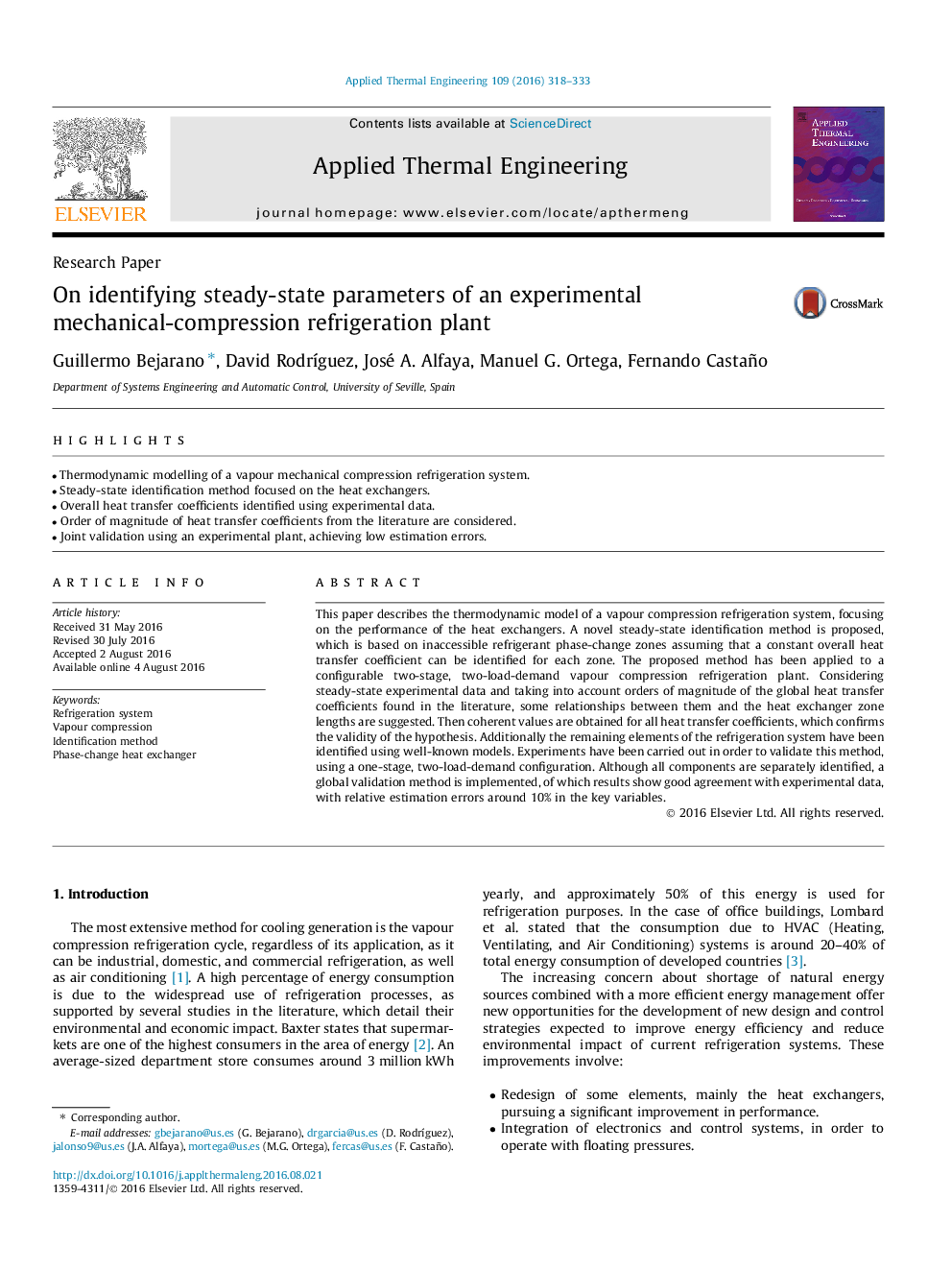| Article ID | Journal | Published Year | Pages | File Type |
|---|---|---|---|---|
| 644468 | Applied Thermal Engineering | 2016 | 16 Pages |
•Thermodynamic modelling of a vapour mechanical compression refrigeration system.•Steady-state identification method focused on the heat exchangers.•Overall heat transfer coefficients identified using experimental data.•Order of magnitude of heat transfer coefficients from the literature are considered.•Joint validation using an experimental plant, achieving low estimation errors.
This paper describes the thermodynamic model of a vapour compression refrigeration system, focusing on the performance of the heat exchangers. A novel steady-state identification method is proposed, which is based on inaccessible refrigerant phase-change zones assuming that a constant overall heat transfer coefficient can be identified for each zone. The proposed method has been applied to a configurable two-stage, two-load-demand vapour compression refrigeration plant. Considering steady-state experimental data and taking into account orders of magnitude of the global heat transfer coefficients found in the literature, some relationships between them and the heat exchanger zone lengths are suggested. Then coherent values are obtained for all heat transfer coefficients, which confirms the validity of the hypothesis. Additionally the remaining elements of the refrigeration system have been identified using well-known models. Experiments have been carried out in order to validate this method, using a one-stage, two-load-demand configuration. Although all components are separately identified, a global validation method is implemented, of which results show good agreement with experimental data, with relative estimation errors around 10% in the key variables.
